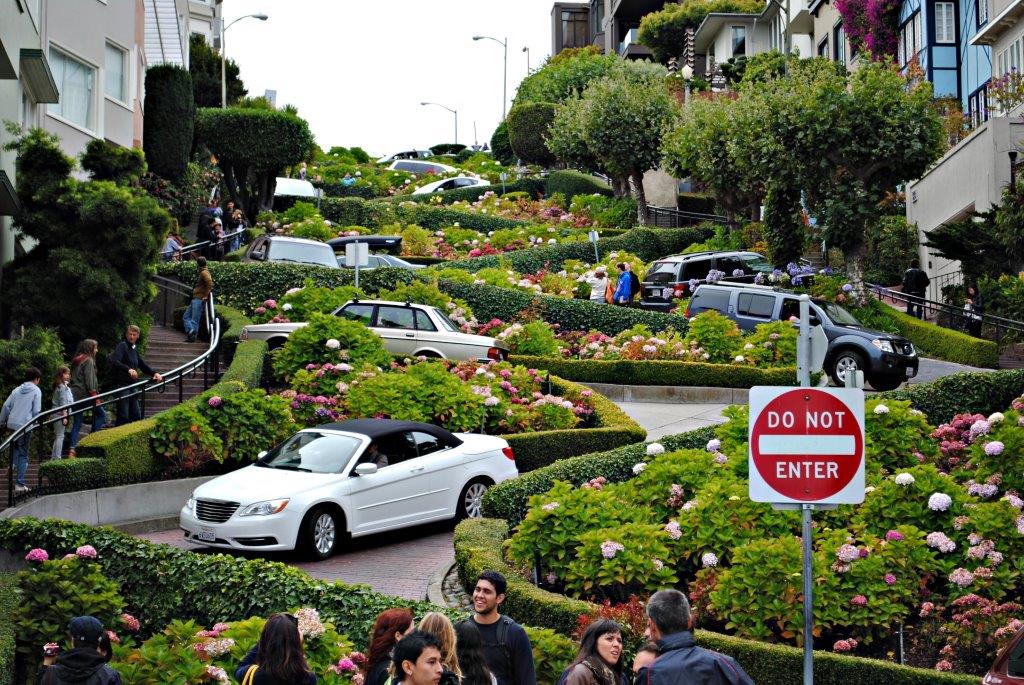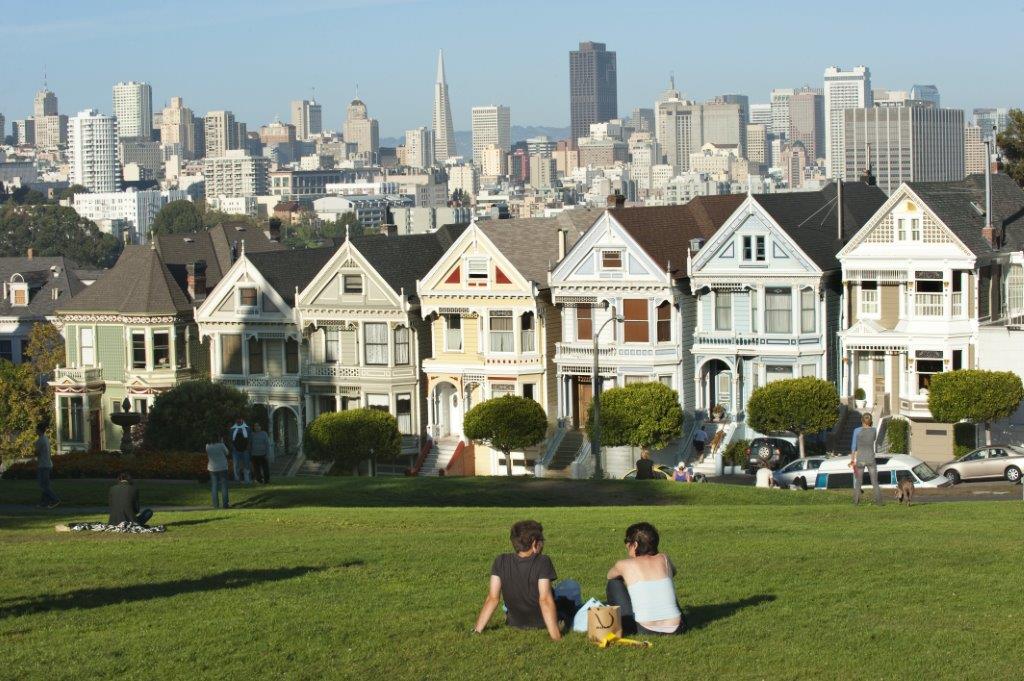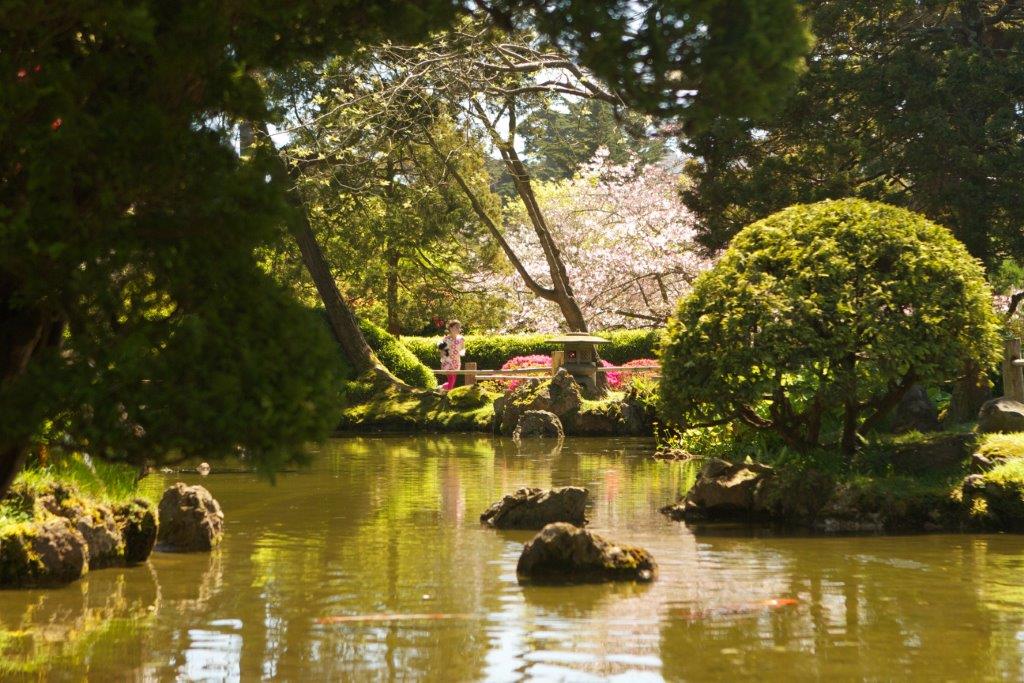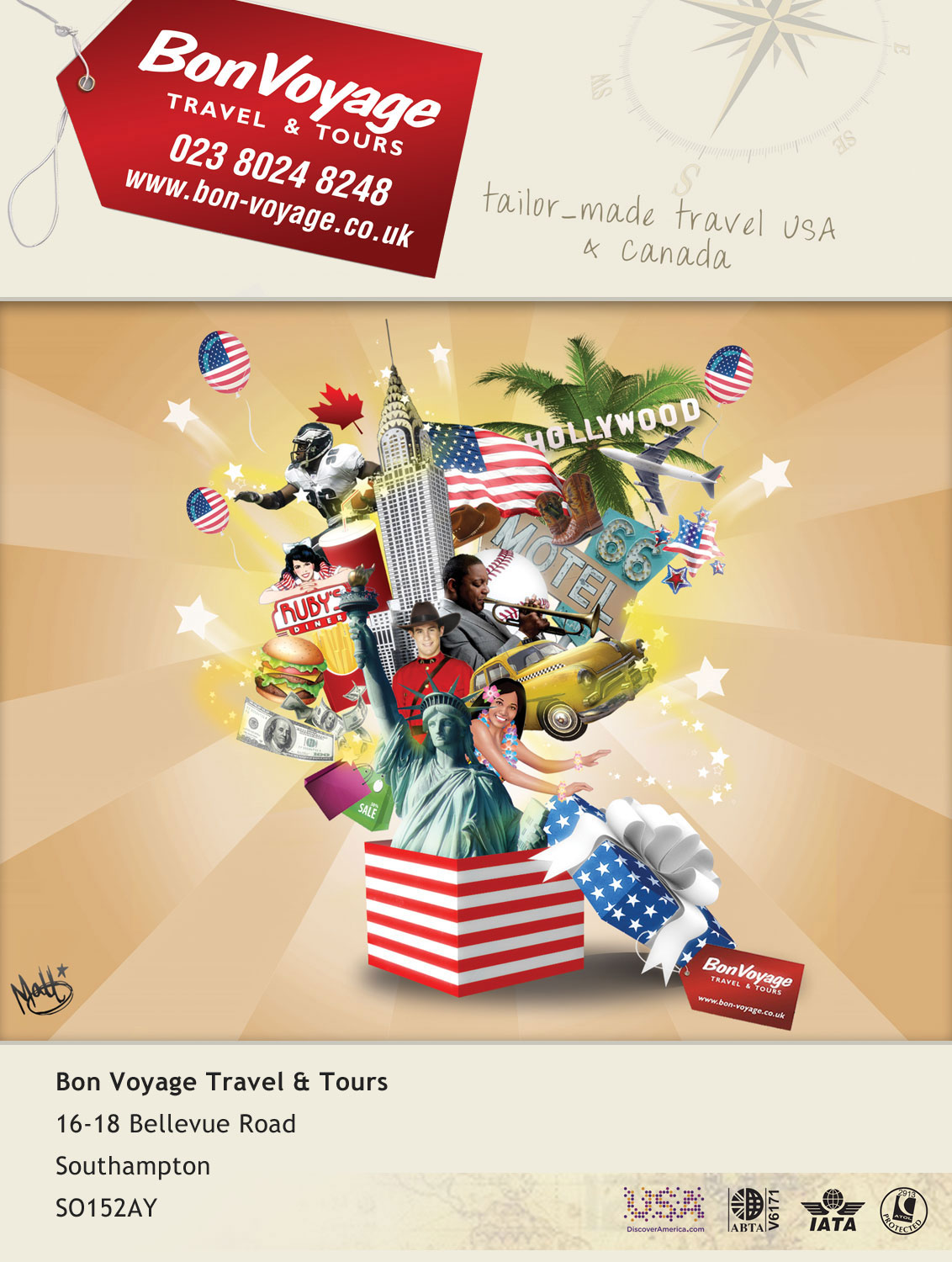

© Bon Voyage Digital 2013 | eZine created by Matt Oliver



There are literally thousands of pages on the Bon Voyage website, all of them packed with suggestions which can be tailor-made into your perfect holiday. Sometimes the choice can seem overwhelming and while we are careful to index the website as clearly as possible even we find the options a little mind-boggling at times. So here’s our at-a-glance guide to some of the great Bon Voyage holidays that might catch your fancy for 2013.











Josh Quittner, a long-time resident, plots his way around the City by the Bay.
I'm a big believer in geographic determinism, and I suspect the clement weather in San Francisco has a lot to do with its pervading buoyant mood. That's why I disagree with the standard observation that San Francisco is the most European of American cities. People smile a lot here. (Do Europeans?) Traffic jams tend to be caused by drivers insisting the other guy go first. (Been to Italy much?) And have you ever seen a place more tolerant of alternative lifestyles? (Greece? Ha.)
Even better for visitors, San Francisco is a manageable size — about six miles square — and the traffic isn't nearly as bad as it is in New York or L.A. So it's possible to do 10 great things in a day, and see most of the city. Here's a one-day itinerary that will take the first-timer methodically through some of the most interesting places San Francisco has to offer.

If you've just flown in from the UK you will wake early; get up and go to Fisherman's Wharf to check out the sea lions that lounge like giant dogs, around Pier 39. At busy holiday times do it around dawn, before the tourists arrive. Afterwards, you can head down Stockton St. into North Beach, the formerly Bohemian part of the city. Get yourself a seriously good breakfast at Mama's, it gets crowded at weekends, so get there early or expect to wait about half an hour. Now it’s time to start walking off the food.

Every great city needs its proud civic phallus — the Empire State Building, the Washington Monument, the Eiffel Tower. At best, they're scenic lookouts; at worst, boring tourist-trap monstrosities. I'll leave it to the architectural critics to appraise the aesthetic merits of Coit Tower, which some say resembles a fire hose nozzle. It gives good views of the city, though, perched as it is atop historic Telegraph Hill in North Beach. The views aside, you're really here for the murals; the paintings inside the tower were completed in 1933 and the depiction of an old fashioned newsstand is my particular favourite.

It's free to get inside the city-owned monument, but if you want to take the elevator to the top to enjoy the views, there’s a small charge. Get here by walking uphill on Lombard Street from North Beach, or take Muni bus 39 from Washington Square Park.

You've seen Coit Tower and the city views. Now it's time to take the stairs down Telegraph Hill — all 400 of them! It's worth it because, along the way, you'll get to see some beautiful homes, gardens and, most times of the year, brightly coloured flora. As you walk, keep a lookout for the wild parrots that live here, then head east toward the Bay, to the Embarcadero, where you can pick up the trolley.
You won't find better entertainment in the U.S. for $6 although the various passes offer even better value. Hop on a historic trolley car on the Embarcadero (you're looking for the F line) and you can ride it all the way to the Castro. Seventeen trolley cars are in service, painted in the colours of the originals from the 1920s and '30s. You can rest your weary feet as you rattle past the Wharf, down the Embarcadero and onto Market Street, one of the city's main thoroughfares.
Take it all the way to the Castro Street station, the end of the line. San Francisco's Castro neighbourhood was initially settled by gay servicemen discharged here from the Armed Forces (for being gay) during World War II. At the turn of last century, it was known as Little Scandinavia; then it became an Irish neighbourhood. Nowadays the area is home to anyone with deep enough pockets.
Don’t miss the famous... Castro Theatre, a pristine, 1920s movie palace that shows excellent art and repertoire films and has a real live Wurlitzer player most of the time.
From the Castro, you can walk to the Haight — it's a little less than a mile — or take Muni bus 33.
The birthplace of America's counter-culture, the Haight was Ground Zero during the summer of 1967, a.k.a. ‘The Summer of Love,’ baby. Hippies used to live here, but at some point the Jefferson Airplane moved out and affluent yuppies moved in, buying up all the colourful Victorian homes throughout Haight-Ashbury and replacing its head shops with high-end boutiques, chic restaurants and hip cafés. My favourite spot in the Haight is Amoeba Music, which is in a former bowling alley and boasts one of the biggest collections of CDs (new and used) in the world.

From Amoeba, you should head west a block along Haight Street to its end. Cross the street and you're just inside Golden Gate Park, at famous Hippie Hill.
Before I moved to the Bay Area, I thought New York City's Central Park was the coolest park in the U.S. But it's got nothing on Golden Gate and its million trees. Be sure to visit the Conservatory of Flowers (closed Monday), which is the oldest Victorian greenhouse this side of the Thames, and the carousel on Kezar Drive, both on the eastern edge of the park.
If you're feeling spry, walk to the western edge of the park to check out the herd of bison at the the Bison Paddock, then hop a trolley or bus back east, or call for a cab. Next stop: the Exploratorium in the Palace of Fine Arts, San Francisco's legendary science museum in the Presidio. Make sure you experience the tactile dome, a pitch-black maze that you have to navigate by touch (it's worth the $20 premium on top of the $15 admission fee); blow the world's biggest soap bubble, as big around as a beach ball; and dissect a cow's eye.

From the Presidio, you can walk to the Golden Gate Bridge, which isn't really golden at all — it's more like of a rust. The bridge is an engineering marvel and one of the most beautiful — if it's not too windy and foggy — walks in the country.
The one good thing to come out of the Loma Prieta earthquake of 1989 was the revitalization of San Francisco's waterfront. The earthquake damaged an elevated highway that cut off the waterfront from the rest of the city; the highway was torn down, opening up the area and transforming old warehouses and docks into yuppie commercial real estate. Case in point: the Ferry Building, which was originally opened in 1898, then renovated and reopened in 2003.
It's a magnificent structure on the Embarcadero, at the foot of Market Street, but the real reason to come here is the food. For burgers and shakes, definitely do Gotts Roadside or for Vietnamese, try the Slanted Door, one of the city's favourite restaurants. Your best bet is to eat at the no-reservations bar.

No doubt you’ll be staying at a fine city hotel with a welcoming bar. At some point you will wish to contemplate your day out in my city while sipping a suitable beverage. Now what shall we do tomorrow?
The open roads of America; is there a more enticing holiday prospect? Behind the wheel of your car place names from rock ‘n’ roll songs spring to life; panoramas straight out of Hollywood movies spread across the horizon; road trips taken by your favourite literary characters can be re-created. And if your daily motoring fare consists of constricted one way systems, traffic bottlenecks and the M25 you can barely credit the wide, open emptiness of North America’s highways.

America’s roads are wide and well signed, the natives do not approach driving as a blood sport and petrol (or gas) prices are about half those in the UK. There are just a few details to bear in mind which will save you time, money and maybe your marriage. We talked to Alamo Rent-a-Car National Account Manager, Barry Marchant about avoiding the car rental pitfalls. ‘My strong advice is that unless you are going for a one off car such as a convertible you should opt for a large car or SUV even if there are just two of you travelling.’

We definitely concur with this especially as Bon Voyage road trips involve considerable mileage. Apart from the extra room afforded by the bigger vehicle you will have a larger engine to eat up the miles, a higher level of specification in terms of cruise control, in-car entertainment etc and plenty of room to stow luggage. Barry adds: ‘the rates we give to Bon Voyage reflect only marginal price increases between each car grade, about £10 per week per size increase so it makes sense to choose a bigger vehicle at this end rather than pay an upgrade charge at the depot which can be $25 or more per day.’

The next imperative as far as we are concerned is satellite navigation or GPS. This modern miracle which knows exactly where you are at any given moment and also happens to have every byway at its fingertips is essential to a happy and harmonious driving holiday. This is where the saving of your marriage comes into play. No matter how old school you are, how finely-honed your directional instincts or well-practised your map reading skills the modern GPS is a godsend. An example of its value comes when you are due to leave an Interstate or state road. The exit could be to your right or left and possibly across several lanes of traffic. A GPS device will tell you exactly where the exit is and with plenty of time to be in the right place. You should either take your own (make sure you have North America mapping) or it can be included with your holiday as part of the car rental.


‘Then we move into the tricky area of optional extras on your rental,’ says Barry Marchant. ‘I think part of the problem here is that our colleagues at the depot are used to dealing with domestic renters who are paying most of their rental charges at the desk.’ Barry is too much of a diplomat to mention that the desk agents are on commission to sell upgrades, extras and insurances so let’s get to the bottom of this particular can of worms.

The car rental included as part of your Bon Voyage holiday includes all your mileage, accidental damage to the vehicle (collision or loss damage waiver), third party liability cover of $1million and associated taxes and fees. We will also recommend that we include costs for additional drivers and a tank of fuel as well as a sat nav device if you are not taking your own. That sounds pretty comprehensive doesn’t it? And it is but it still allows for three items to be brought up at the counter.
We’ve already covered this but there will occasionally be vehicles available that are ‘off contract.’ This means that there are not enough of them to include as an option amongst the regular vehicle grades but the depot Manager might have a few ‘specialty’ cars. If you are tempted to make the change, well and good, but do bear in mind that ‘only $25 extra day’ will be plus tax of around 20% so over a two week rental will add about £265 to your credit card bill.
You can dismiss this out of hand if you have your own personal travel insurance policy, which is absolutely essential when travelling to North America. This item is covered in all travel insurance policies to much higher limits than offered here.
This amounts to cover for occurrences that are your fault rather than any deficiency with the vehicle. For instance, if you lock the keys in the car or lose them altogether, or perhaps need fuel delivered because you have run out of petrol. Some of our friends on the car rental counters have a tendency to make it sound as if any breakdown or repair is down to you if you don’t take this insurance at around $5 a day plus tax.
This is categorically not the case and rest assured that there is a 24-hour breakdown service, towing, tire or glass repair or replacement included as part of your rental. We actually think that RSP is quite pricey for the added protection it affords but you now have the facts at your disposal when making the call.
One last word on extras – we know you might be tired coming off a long flight and sign up for extras you may not need but please keep your wits about you. Rental companies are loath to rescind charges after the event.
Driving in America is one of the joys of exploring this vast continent. Bear these points in mind and you will have a road trip to remember.

Bon Voyage Travel and Tours started life as a tiny one-shop travel agency in Winchester in January 1980. The intention at the outset was that the company would open branches throughout the area and beyond but we were soon side-tracked by the call of America. While there were travel agents on every High Street no one specialised in individual areas to the exclusion of all else. At the time, Mediterranean package holidays were the staple for travel agents and few travellers had crossed the Atlantic although there was an appetite to go ‘West’ if it could be made affordable.
As luck (or possibly even judgement) would have it the boom in affordable TransAtlantic travel pioneered by the likes of Freddie Laker came upon us and the number of Brits visiting the USA increased sharply.
The co-founders of Bon Voyage, Alan Wilson and Alan Orsmond found themselves in a position to capture a significant share of this new market. They not only knew the States well from their own travels but through their earlier careers in London they had excellent contacts within the airline community notably at Pan Am and TWA.
Armed with contracts from some of the airlines, a few hotels and Alamo Rent-a-Car they were set to thrive if only, in those long ago pre-internet days, they could get the message out. Lacking the funds for expensive mail shots or flashy advertisements, they tentatively took a thumb nail advertisement in the Saturday Daily Mail ‘USA from £199’ and waited by the phone.
Immediately they were completely inundated there and then not just with vague enquiries but firm bookings. It wasn’t long before the idea of the chain of agencies was abandoned and a move to much bigger premises in Southampton came about. By now the two-man operation had grown to 10 and then 15 and the mid-80s saw the company become only the second in the UK to order the revolutionary SABRE airline reservations system. No longer needing to telephone airlines to book seats the process was speeded up immensely and sales and productivity shot up again.
Those early travellers headed almost exclusively to Florida; the wonders of the Walt Disney World resort in Orlando and the beaches of the Sunshine State. Indeed the company’s first ever brochure in 1984 featured Florida alone. But it wasn’t long before California, New York and Las Vegas started to make their mark and the idea of selling not just prescribed ‘packages’ but holidays exactly tailored to individual travellers came about.

While holidays to the Med were constrained by the rotation of charter flights, blocks of hotel rooms, tour buses and the like, the Alans soon realised that their holidays to America didn’t have to be like that. Since scheduled air flights operated every day and their agreements with their suppliers were for each individual hotel night or car hire day you could build exactly the holiday people wanted.
Furthermore airlines were happy for travellers to fly into one airport and back from another and the company even negotiated for stopovers at cities along the way. The car companies also took to the idea of rentals between different cities and were even responsive to abandoning some of the notoriously high penalty charges for re-positioning cars back to their ‘home’ base.
The concept was gradually evolving that Bon Voyage should become genuine consultants rather than just holiday floggers. For this to be credible the sales team had to KNOW America inside and out and the company invested heavily in travel to all parts of the States and Canada for members of the team and subsequently recruited Americans to be involved in the sales and training process.
Fast forward to today and 32 years on from the shop in Winchester to what we claim to be the best travelled and best trained team in the business of holidays to North America.

